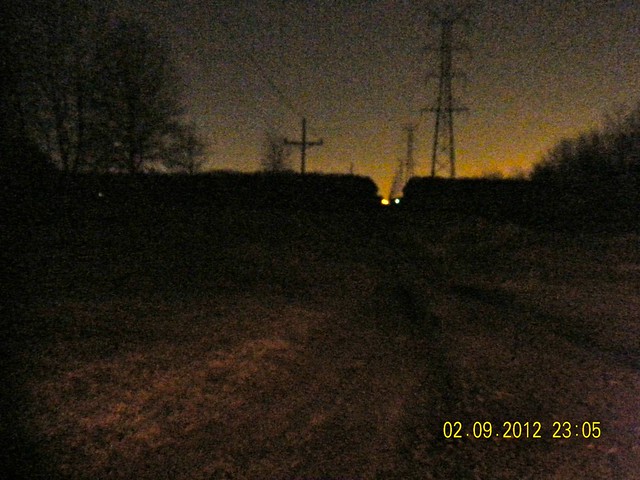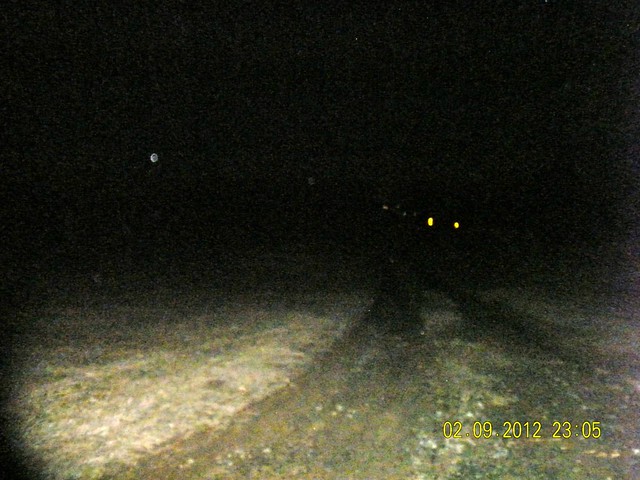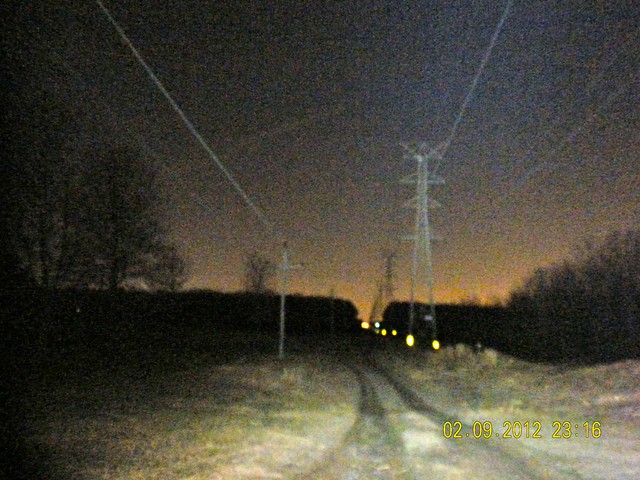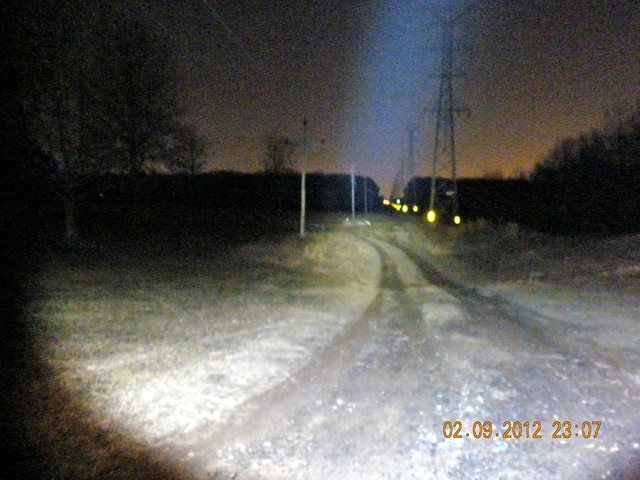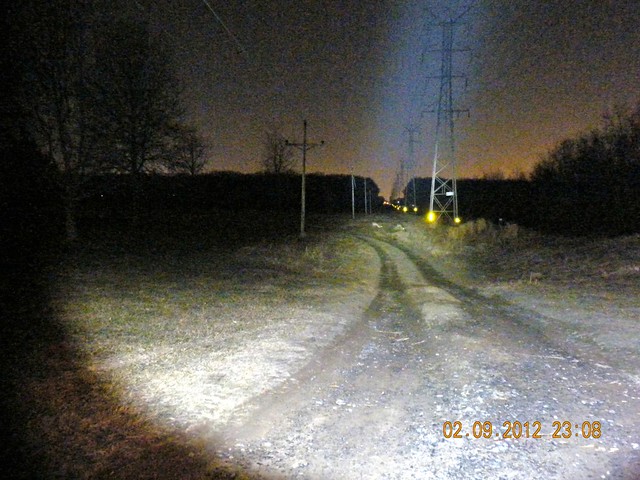In addition to what has been suggested, I would like to add an emphasize on scouting the entire site so you know whats supposed to be there, and, if there are existing trails/obvious routes people take from one place to another OTHER THAN the ones they were supposed to.
That way, if you see something out of place/missing...you CAN notice it.
The next parts really depend on what you're supposed to DO if you discover something amiss.
Lets say you interrupt some gentlemen in the process of carrying the copper gutters from one of the warehouses towards the end of the property opposite where the entrance is...are you armed?
Are you expected to STOP them, or, are you expected to radio someone and report it?
This is a key concept, as it changes what you DO when you see them, and HOW you LOOK FOR them.
If you are armed/and expected to STOP the crime...you can be more brazen in your patrol, and in your apprehension process, because you are a force there TO discourage looting, etc. IE: THEM KNOWING you are patrolling is a disincentive to TRY to steal/vandalize there.
If your job is to patrol/report back..and NOT STOP them...its then a judgement call typically biased towards the "hardness" of the criminals you expect to face at that site. If its always vandals...they tend to run like rabbits if they see you.
If they are stealing stuff, they tend to run if they think you would otherwise ID them, but to hide/hope you wander off again so they can CONTINUE the process once "The cost is clear".
If you are supposed to call it in but not stop them...its actually better to pretend you DIDN'T spot them...and wander off as they hoped....but wander in the direction they might escape to/leave them the direction your call response comes from, etc.
If you wander off and find the hole in the fence/ladder etc....you can call that in too....and leave it there, so there's people waiting on the other side when they "come down the ladder" etc.
As for patrol style - many work...but the environment will make some work better than others.
One school of thought is to patrol in the dark, with night adapted eyes, ears open, moving quietly...so you might see THEIR lights/hear THEIR activities...using only a little light as needed where its just too dark to safely move.
That is most used where the environment is too obstructed for good sight lines, and your light will alert them to hide well before you can see them.
If you have large open sight lines, and for example in daylight would be able to see perps...then a big 'ol flood is nice to make it LIKE daylight so you can see the perps.
The broader the beam, the less time they have to hide. If the area is too wide/deep to light up with your beam all at once...you do need to sweep.
If you think someone might be hiding and potentially considering shooting you...you need to do this as quickly as possible. A slow steady sweep is nice for observations...but makes taking a shot at you easier...they can time it and squeeze it off.
If your light plays rapidly in a fast series of less predictable sweeps, they are less confident in their ability to get the shot off w/o being seen...and wait.
You are of course more likely to sweep across them and not notice them if they are hiding, on a fast sweep, etc...and you'd be also moving to make a harder target yourself.
This is why, ideally, one guy would not be sent into a large warehouse to apprehend a shooter...its too dangerous. (If they above might apply...I'd recommend ONLY calling things in)
If again, its just a vandal/animal issue...a slow methodical sweep is fine...if its noisy to escape. If its not noisy to escape, the sweep needs to be less predictable, to make them feel they should sit tight and not run...as if they could quietly slip away...they might. Animals vary in their response...some bolt in panic, some seem oblivious to your presence.
This in another area where knowing the terrain works...if you know how they have to escape, you can "herd" them where you want them to go. If you know there's a dirt road/trail that leaves tracks, or mud, a large field, or whatever serves the function were you are...you can try to make them go where they can be followed more easily, rather than disappearing into brush, etc.
If you have more than one light...you can leave one light on the floor to obscure their view of what you are doing/provide background lighting of say a way out in case they go for it, etc....and then use another light to search in more detail.
If you being there is the deterrent...you patrolling with a giant light, so that you CAN be seen, might be all your boss wants....he's billing for a night watchman, and, by golly, there you are....and everyone's happy.
The bad guys say..."They have a night watchman over at there...lets got to to the OTHER warehouses"...Mission Accomplished.
If even KNOWING there's someone patrolling, they STILL go to your site, well, its either a very tempting target, or, for kids at least...part of the attraction (The excitement of you trying to catch them is a lot of fun if you're a kid).
If its animals...well, they're there despite you too, and either go somewhere else because you are annoying/threatening to them...or they ignore you because they have no fear of you, etc.
This means that you might sweep big lights at some areas of the patrol, but patrol in stealth mode in other areas/situations at the same site...depending on the combination of all of these types of factors.
If you only call stuff in, you just need to know they're there...and call in that there's people there. You never need to turn on a giant light to see them/what they're doing in more detail...until the ones who DO stop them arrive, etc.
You can call them in like in RECON, where they don't KNOW you're there, and they don't know they've been reported....until its too late....or in a confrontational manner where you hold them at bay, if that's one of your options, and so forth.
Hope that helps a little.


